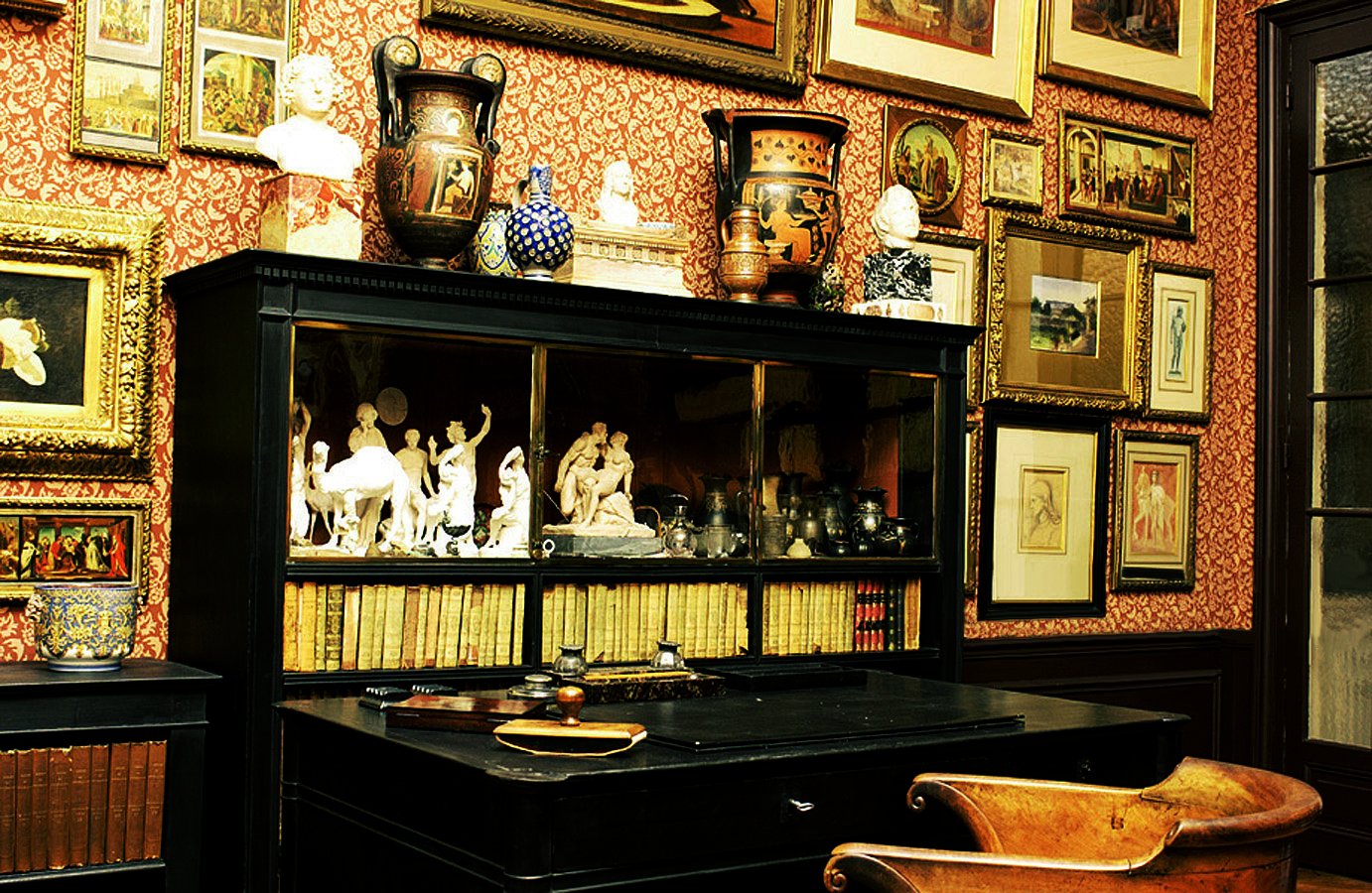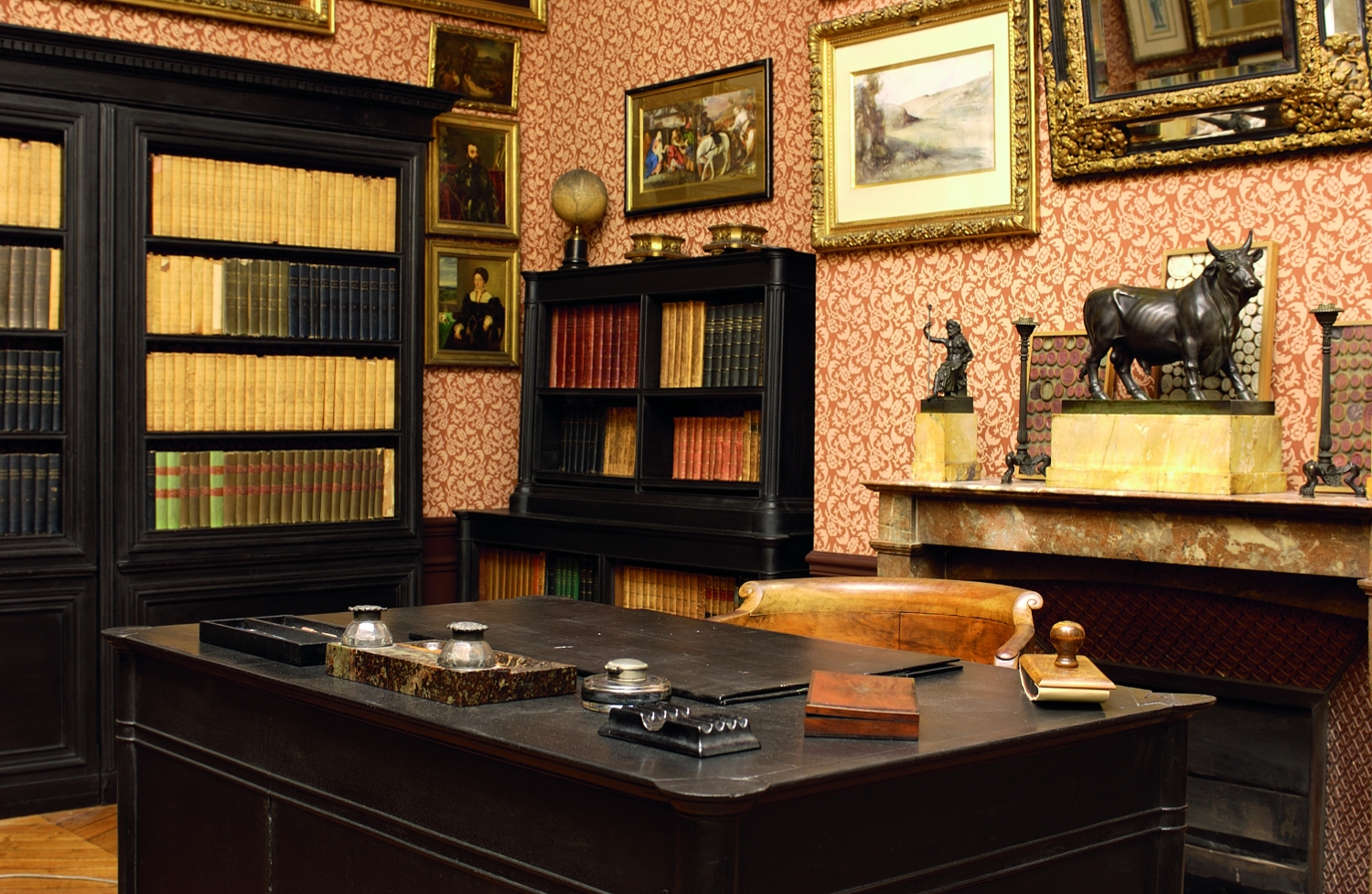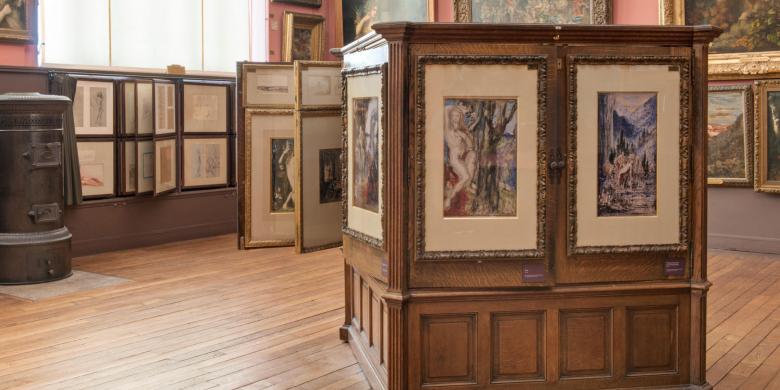Gustave Moreau’s Studiolo
In 1895, Gustave Moreau instructed the architect Albert Lafon to undertake major extension work. He wanted to transform his family home into a "small museum". Two large studios were to be built on the second and third floors, and two new rooms created on the first floor. Thus, a gallery and a study would be added to the existing building. Having moved into his new study in 1896, this was where that the artist received his infrequent visitors during the last two years of his life. A modern cabinet of curiosities, this room accommodates the rare books and unusual or precious objects that Moreau had inherited or carefully collected throughout his life.
A glass case with brass doors contains a remarkable collection of antiquities that had belonged to Louis Moreau, the artist’s father. Amongst the ceramics, mainly from Italy and most dating from the 5th and 6th centuries BC, two magnificent, impressively large kraters stand out, found in the tomb of an Apulian princess. Along with these ancient objects, are small plaster and bronze replicas of famous sculptures and reproductions of intaglios, which the artist often used in his paintings.
In the bookcases are 16th and 17th century editions of the most famous treatises on architecture (Vitruve, Serlio, Philibert Delorme, Vignole, etc), acquired years before by Moreau’s father, who was an architect. Also of note are some large illustrated folio books and a beautiful 1836 edition of Flaxman’s works - an important source of inspiration for the artist.

A Veritable Museum within a Museum
But the most surprising feature of this room is its role as a place of memory. Gustave Moreau had in fact wanted to gather here his most beautiful studies of the ancient masters, those copied at the Louvre and during his trip to Italy, arranged together as if in a large three dimensional album. Visitors can enjoy the famous copy of Raphael’s Putto, executed in the Academy of Saint Luke in Rome, and which the artist had never wanted to part with in spite of an attractive offer from an English lord. Among other reproductions is a magnificent replica, executed in Florence, of the Angel painted by Leonardo da Vinci in Verrocchio’s Baptism of Christ, along with a few episodes, copied in Venice, from Carpaccio’s Legend of Saint Ursula and Legend of Saint George. Studies in oil and watercolour after the Pompeian paintings in Naples demonstrate, once again, Moreau’s interest in Antiquity, while the views of Rome and the surrounding area reveal, quite unexpectedly, his remarkable qualities as a landscape painter and watercolourist. The only exceptions to this homage to Italy are two copies of equestrian portraits: one of Charles V by Van Dyck and one of Philippe IV by Velázquez. The only picture not signed by Moreau in this room is a remarkable 17th century still life by the Flemish painter Jan Fyt that Moreau received from the art dealer Tesse in exchange for one of his own Delilah paintings. Several copies produced in the Louvre in 1863, demonstrate the continuing attraction that Italian painting held for Gustave Moreau. These studies, among which is a small replica of an Annunciation attributed to Lorenzo di Credi, also have historic value. They recall how these works were once in the Campana collection in the Louvre before some were dispersed to provincial museums.
The original display of all these paintings in the cabinet de réception, exactly as the artist himself had arranged them, has been meticulously re-established. And thus the visitor experiences the atmosphere described by the Count Robert de Montesquiou: "Gustave Moreau, so jealous of his originality, could, when he chose, reveal himself to be a brilliant copyist, both inspired and respectful. His friends, his visitors, those privileged few, remember the decor of his antechamber, where, with both pride and modesty, his glorious signature graced the prettiest and most charming replicas. M. Degas, who had seen them being produced in Italy, when they were young and close friends, spoke of them with admiration". (Altesses sérénissimes, 1907). The original appearance of this cabinet was restored in 2003 on the occasion of the museum’s centenary.


